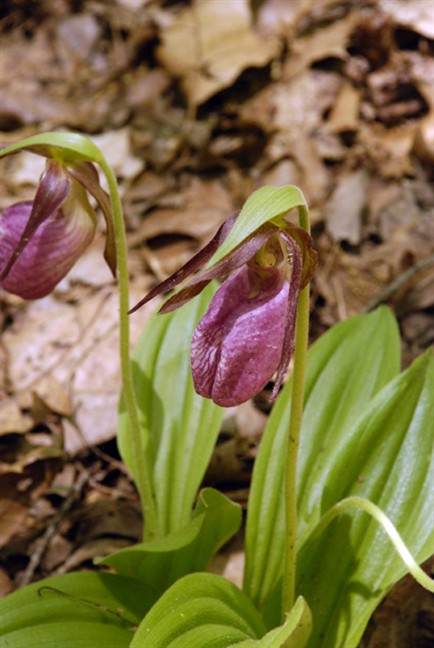...for conservationist and gardener
Seeds and plants
When you look for native plants, check with local growers that
specialize in natives.* We know many such growers and think that
throughout the industry you are unlikely to find more credible or
caring people. They will know which plants in their inventory are
on
special lists, including queen of the prairie (top) and
pink lady's slipper (below).
*Examples, growers from Michigan and Illinois
Other growers can be found by Internet search
using terms such as
native plant producers (name of State or Province)
More native plant sources are listed
in our
notes from presentations about Native Plants
Thus plants and seeds may be tough to find. Special permission
is required to collect protected plants or their seed, and such
permits are more likely to be granted for a conservation project
than for a commercial nursery's stock.
Growers might be able to sell listed plants because they began
growing a species before it was declared threatened or endangered,
and continue production using only that line of nursery grown
plants for seeds, cuttings or divisions. For instance, Wildtypes
native plant nursery in Mason, Michigan grew the threatened
species Geum triflorum -- prairie smoke or old man's whiskers --
from seeds collected pre-listing and may continue to propagate
those plants.
Others can grow plants of species that are locally endangered or
threatened because they buy seeds or plants from areas where
the species is not in trouble.
Sometimes you will simply not be able to find a source for
a particular native. Then all you can do is maintain contacts at
native plant growers and at organizations such as Cranbrook
Gardens, Toledo Botanical Garden and the New England
Wildflower Society. The latter groups sometimes obtain permits to
conduct "rescue digs" in natural areas due to be paved or otherwise
lost. Plants from those digs may be relocated to the gardens and
sometimes may even be propagated.
Below: Pink lady's slipper (Cypripedium acaule)
is native throughout the eastern U.S. and much of
Canada. It's endangered or threatened in some parts of its range
(Illinois, Tennessee), but growers do produce it. It's difficult to
get growing and slow to reach blooming size so expect to pay a high
price for such a plant. We purchased pink lady's slipper from the
New England Wildflower Society spring plant sale at their Garden in the
Woods in Framingham, Massachusetts. We were glad to be able to
place the plants in a place where they might multiply in a client's
maple-pine woods while simultaneously supporting the NEWFS and on
of the public
gardens we love.
